House and Slave Quarter Tours
June 17, 2015
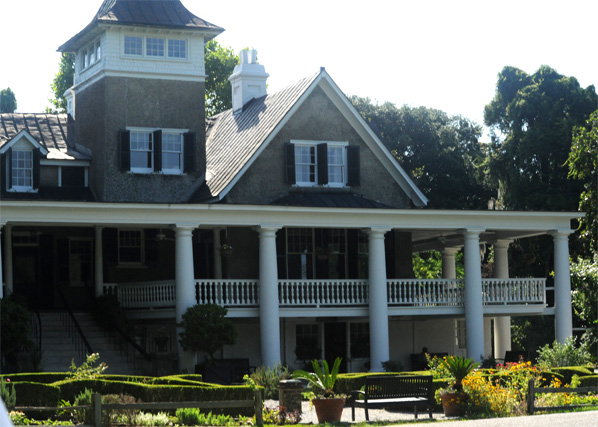 | After our inital garden tour and the Nature Train tour we went to the Drayton house for a tour. I always start out a bit irritated in going into places where photography is forbidden, but I have to admit that it was an informative tour about the house and the history surrounding it. I was interested that this is the third house, the first having been burned by a lightning strike and the second by Sherman during the Civil War. I was also interested in fine craftsmanship in wood furniture dating from the late 1600s. |
The live oak trees on the approach to the house had an impressive collection of Spanish moss. The current plentitude of moss was made more impressive by the story that hurrican Hugo had blown away all the Spanish moss. 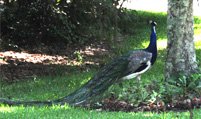 We didn't see all that much of their peacocks, but you would have had to be deaf not to hear them! | 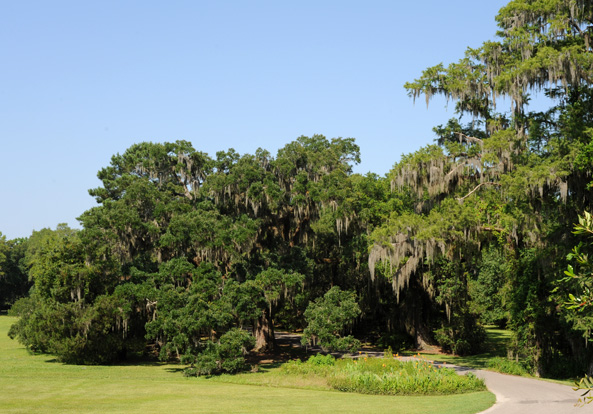 |
Slave Quarter Tour
 | We boarded another tram to take us to the slave quarters of the plantation. There were four white board houses which had housed two families each. We were told that during the time before the Civil War there were an average of 45 slaves on the property. |
These are the other two slave houses, and there was an additional small building called a smoke house among other uses. |  |
The young lady who was our tour guide did an excellent job, doing a capsule history of the whole slave trade. She also described how the slaves were used here in the growing of the "Carolina gold" rice. The Carolina gold descriptor was not the color of the rice but a reference to the fact that it was very profitable during the period in which it was grown. The point was well made that it was practical only with the abundant supply of labor from the slaves, and that after the Civil War it was never grown here except for three small projects active now.
 | This is the left side of the first house, where a whole family lived in one room. To provide the children with a place to sleep, there was a loft where hay or straw was used for bedding. It was explained to us that these houses had undergone multiple modifications over a couple of centuries, and had had some restoration efforts lately. Some were lived in up until 1975. |
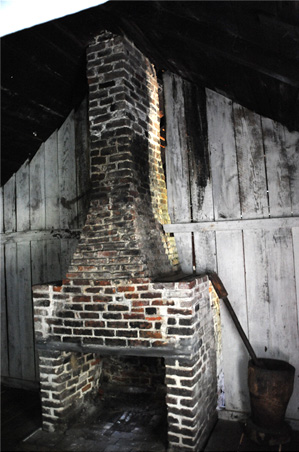 |  |
At left above is the fireplace in the unit shown above it with the loft. It appears that this was a double fireplace, serving both units of the duplex. I understood this one to be nearest to the state when slaves lived there. At right above there is a potbellied stove in addition to the fireplace.
My understanding was that the cabins were mainly for sleeping and for protection during inclement weather. Normally most of the cooking and the living was outside on the lawn.
A couple of the units had old newspaper glued to the boards to help seal against the wind. You could read old newspaper articles - and a comment was made that some of the rennovation efforts had made copies of old newspapers to make sure you could read about current events of those days. | 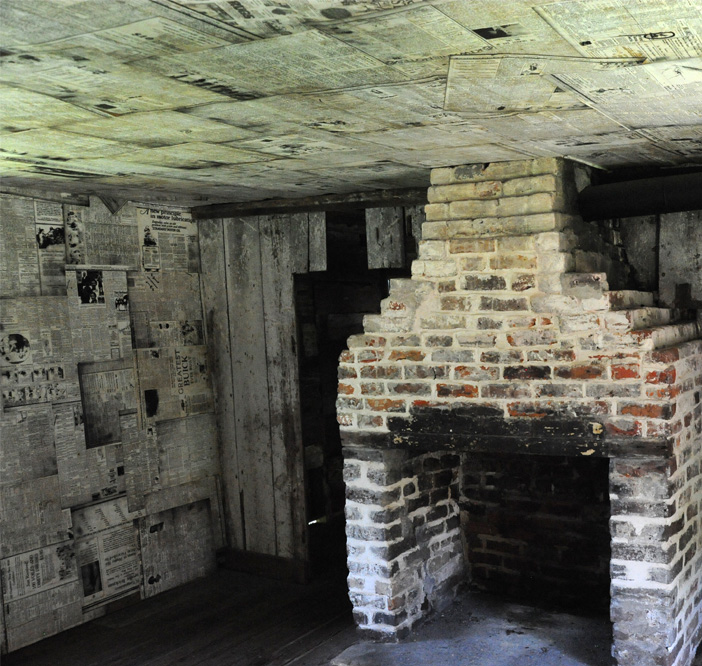 |
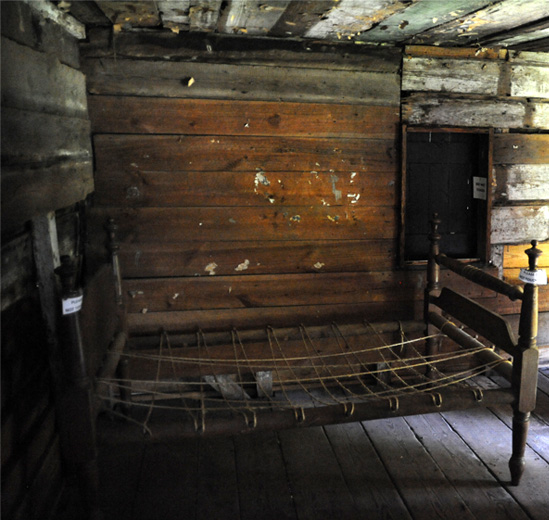 | This is an example of a bed in which whatever bedding was available was held up by a network of ropes. It was suggested that the adults would have some kind of pad or mattress while the children slept on straw in the loft as shown above. One story was that you would have to tighten the ropes every night for there to be much comfort for sleeping in one of these beds. Our guide suggested that this was the origin of the phrase "sleep tight"! |
Another fireplace and bed, I think in the second of the four duplexes. | 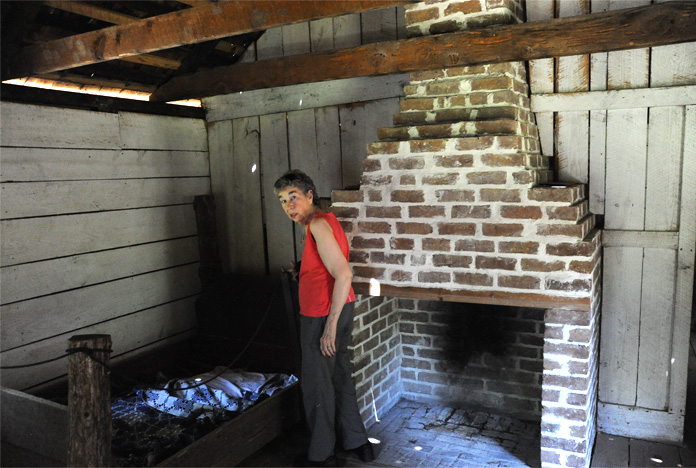 |
 | This last house was billed as the most renovated, and it had a table and a hinged window. |
At the end of the row of slave houses was this grand liveoak tree. But our earlier guide had told us that it was only the fifth largest liveoak on the property. There were lots of grand ones, even after hurrican Hugo destroyed about a hundred of them. |  |
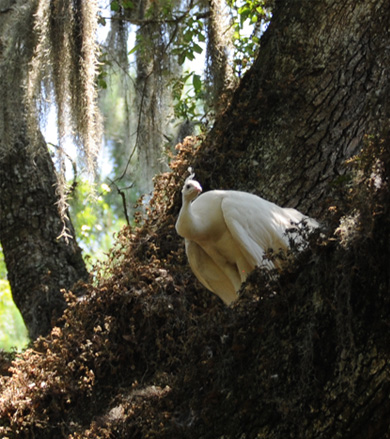 | Up in the huge liveoak was a white peacock, and its presence was by no means a secret! You could have heard its call a mile away. It had been in the tree all day - we had seen and heard it on our earlier tour this morning. 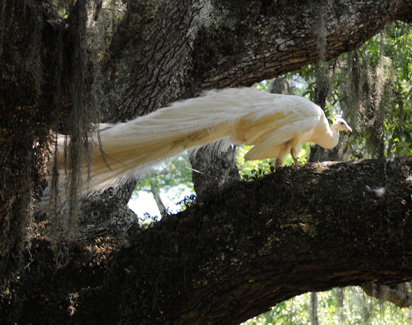 |
Strange to take a picture of a ditch? Maybe so, but this is no ordinary ditch. First of all, it is a dramatic green color from the duckweed. In addition, it is really an irrigation canal for rice grown from the late 1700s until the Civil War. And it was dug by hand by slaves.  It is also home for the yellow-bellied turtle. Also an occasional alligator - bad news for the turtles! | 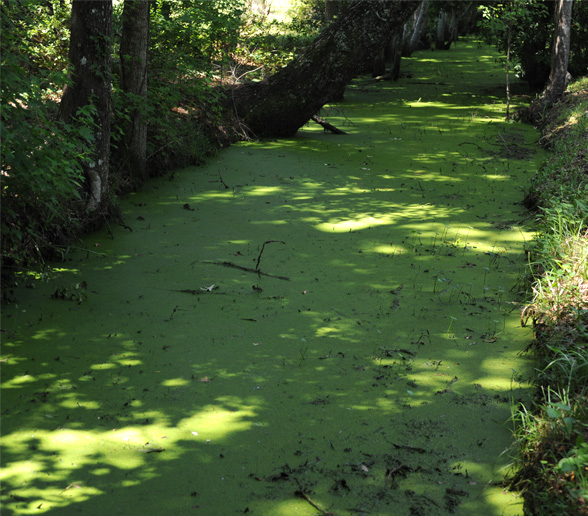 |
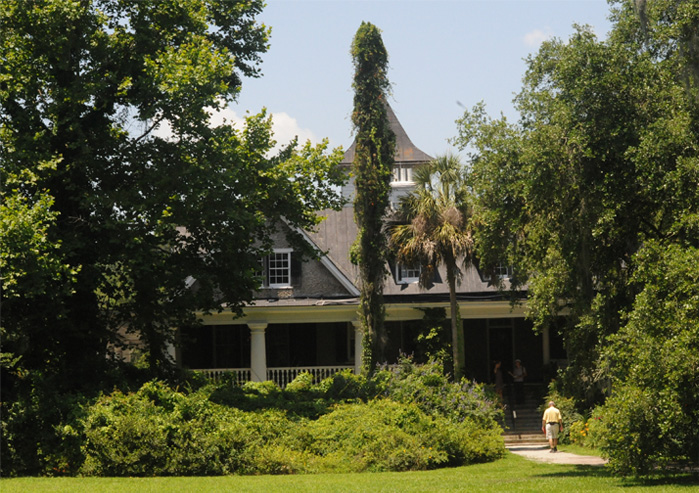 | The tram delivered us back to the Drayton house, so we have come full circle. This is a view of the front of the house, which faces the Ashley River. We are headed out to the Nature Boat tour. |
| Nature Boat tour |
2015